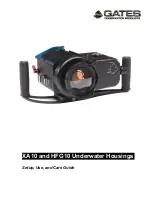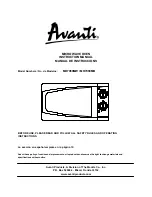
2
PRINCIPLE OF OPERATION
The
Vibra
Rod
™ vibratory sensor provides reliable point
level detection in a wide variety of process control appli-
cations within the powder and bulk solids market. The
vibrating probe principle overcomes application difficulties
associated with changes in material, temperature, and
humidity while providing reliable solid state electronic cir-
cuitry that requires no calibration.
The
Vibra
Rod
has the ability to detect a wide range of
material densities. In addition, using a single-prong probe
eliminates the potential problems associated with material
build-up and false signaling associated with the dual-
prong “tuning fork” probes.
The
Vibra
Rod
is available in a variety of configurations,
each specifically designed to satisfy particular applica-
tions. Available configurations include: standard probe
and pipe extension probe.
The
Vibra
Rod
™ line of point level sensors is a mechani-
cal resonance system that is excited at a resonance by an
electrical circuit. Two piezoelectric crystals are mounted
internally at the probe’s base. The electronic module gen-
erates an electrical signal that has an equivalent frequen-
cy to the probe’s resonant frequency; this signal is applied
to one crystal, which causes the probe to vibrate. The
vibration is monitored by the second crystal which pro-
vides an electrical signal back to the electronic module.
When material contacts and surrounding the probe, the
vibration is dampened and the signal from the second
crystal is reduced. This signal reduction is detected by the
electronic module, which reacts by providing a signal out
of the module through the relay contacts.
Choosing a Location:
(See Figure 1)
1)
Material Flow:
When selecting a location for the
Vibra
Rod
™ level sensor, choose a point in the vessel
where the probe will be out of the direct flow of incom-
ing and outgoing material to prevent any mechanical
damage that may be caused by the pressure of the flow
(See section regarding Protective Baffles). The
Vibra
Rod
sensor must be positioned at a point where
incoming material will reach and cover the probe in its
normal flow, and when receding, will flow away from
the probe in an even manner. Choose a position
where a majority of the probe (not just the tip) will be
covered. This is particularly important when detecting
materials with low bulk densities. If the target material
to be sensed is a powder, the
Vibra
Rod
sensor should
be installed at an incline exceeding the
angle of repose (for high level detection
use vertical mounting) in order to pre-
vent powder buildup/clinging that might
substantially reduce the self-cleaning
effect of the vibrating rod. Also, avoid
mounting the
Vibra
Rod
sensor in a
PRE-INSTALL ATION CONSIDERATIONS
recess (See Figure 2). In addition, material flow char-
acteristics such as “rat holing” (caving) or “bridging”
(arching) of the material in the vessel should be con-
sidered.
2) Vessel Interference:
Select an area where the probe
will not come in contact with internal structures of the
vessel.
3) Vibration: CAUTION
- The
Vibra
Rod
should
not be used in applications with severe vibration, such
as being in close proximity to vibration devices used to
promote material flow, as this could damage the probe.
4) Dynamic Material Flow:
Please consider the maxi-
mum limits of bending force as shown in Figure 3 when
choosing a mounting location and installing the
Vibra
Rod
level sensor.
Also, note that the sensor may not reliably trigger / alarm
unless covered by a static layer of material. Constantly
moving matter may present an issue.
Figure 1
Figure 2
Figure 3
ĺ
,/!$
ĺ
,/!$
34!.$!2$
ġ
,A&ġ;.=
0)0%ġ%84%.3)/.
ġ
,A&ġ;.=
-!8)-5-
02/"%ġ,/!$).'
ġ
ġ ġ
TOUCH


























